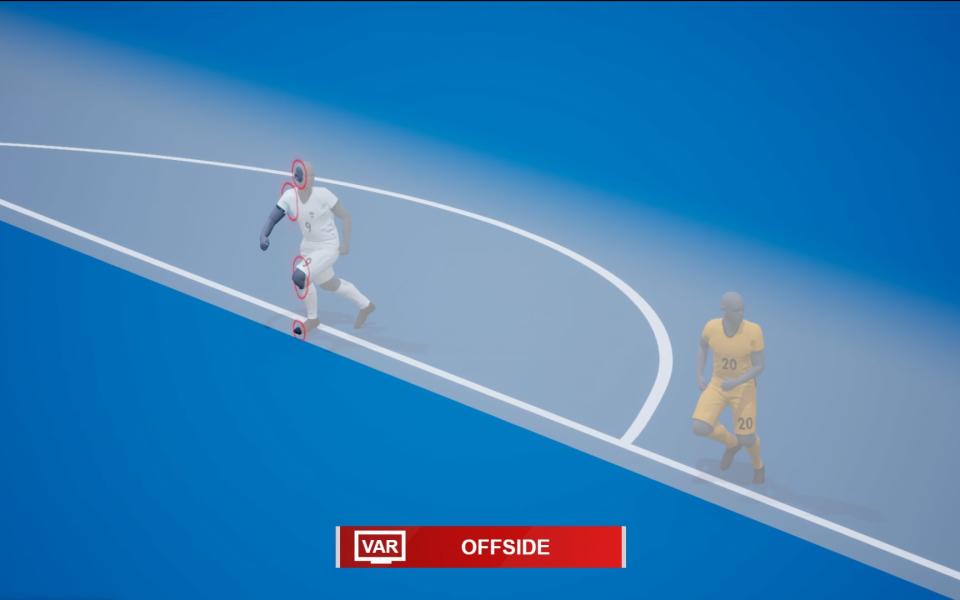How Fifa's new offside technology will work at Qatar World Cup

Technology that automatically detects when a player is offside will be used at this year’s World Cup in Qatar, Fifa has announced.
Football’s governing body has said the semi-automated technology will help to significantly reduce the time required to make offside decisions through the use of Var.
The technology, which includes a sensor within the match ball and 12 dedicated tracking cameras, is the result of three years of research and testing.
Pierluigi Collina, the chairman of Fifa’s referee committee, said the new technology is expected to reduce the time taken on Var offside decisions from 70 seconds to around 20 seconds.
The system has been trialed by Fifa at test events, and also at last year’s Arab Cup and Club World Cup. Collina said the testing has been a “major success”.
How does it work?
At this year’s World Cup in Qatar there will be 12 dedicated tracking cameras mounted underneath the roof of each stadium. These cameras, as seen in the animation below, will track the precise location of the ball and up to 29 data points of each individual player, 50 times per second.
Within the official match ball there will be an inertial measurement unit sensor, which sends data to the video operation room 500 times per second. Fifa says this technology will allow for a “very precise detection of the kick point”.
When combined, the limb-tracking and ball-tracking data will provide an automated offside alert to the video match officials. Those officials will then check the decision themselves before informing the on-pitch referee.
If the officials do not agree with the system’s conclusions, they can still manually select the moment the ball was kicked and draw their own offside lines on the screen, as they would currently.
What will the fans see?
Supporters will have to wait for a decision to be confirmed by the referee on the pitch. Once that has happened, though, the positional data points used in the decision-making process will be used in a 3D animation.
This graphic will show the precise position of the players at the moment the ball was played. Once created, the image will be shown on screens within the stadium and made available to broadcasters.
Are human officials being replaced?
Collina has denied that on-pitch referees are being rendered irrelevant by these technological advances, insisting that the officials will still be involved in the process.
For example, the new technology can only inform the officials when a player is offside. It cannot answer questions such as whether that player is interfering with an opponent, or assess whether a foul or handball is committed.
“It is called semi-automated offside because the final decision is still taken by the video match official,” said Collina.
“The aim is to give an answer as quickly as possible, with this answer being very, very accurate. The Var has to validate the final decision before informing the referee. This is the reason why it is called semi-automated offside; because there is still the intervention of the human being to make the final call.
“Our objective is to prepare the referee as best as possible to avoid using the technology. But the technology is there to avoid making mistakes. Even the best referee can make a mistake. He's a human being. We know it.
“And that's why we implemented a system using tools that can really reduce the possibility of a human mistake affecting the outcome of a match.”

 Yahoo Movies
Yahoo Movies 